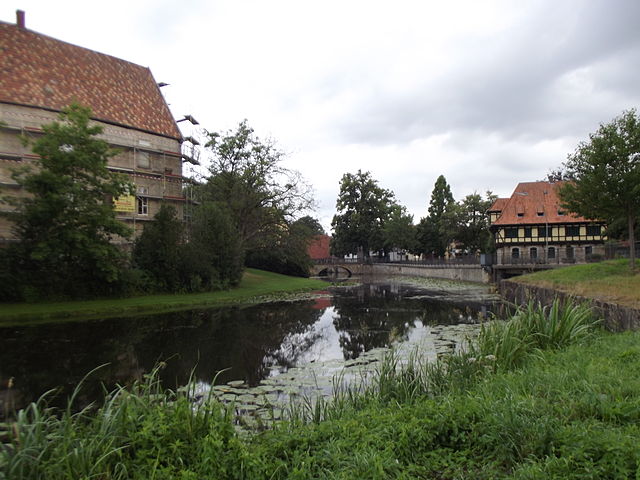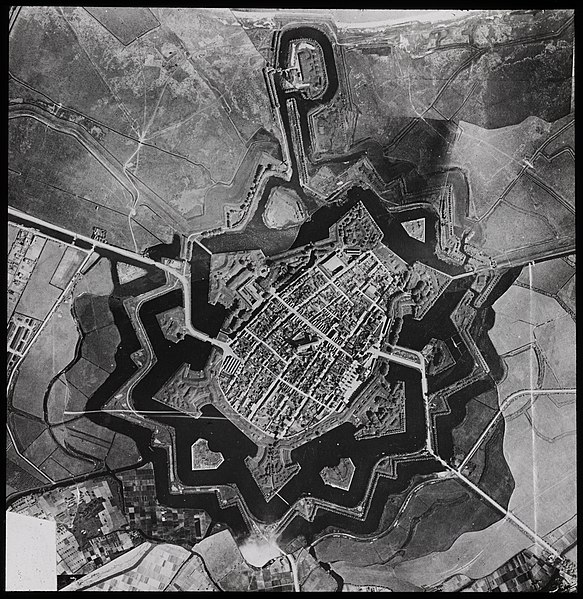Bodiam Castle is a 14th-century moated castle near Robertsbridge in East Sussex, England. It was built in 1385 by Sir Edward Dalyngrigge, a former knight of Edward III, with the permission of Richard II, ostensibly to defend the area against French invasion during the Hundred Years' War. Of quadrangular plan, Bodiam Castle has no keep, having its various chambers built around the outer defensive walls and inner courts. Its corners and entrance are marked by towers, and topped by crenellations. Its structure, details and situation in an artificial watery landscape indicate that display was an important aspect of the castle's design as well as defence. It was the home of the Dalyngrigge family and the centre of the manor of Bodiam.
Bodiam Castle
A 15th-century depiction of the killing of Wat Tyler, leader of the Peasants' Revolt in 1381. Edward Dalyngrigge helped Richard II put down the revolt.
Bodiam Castle was built on a fresh site.
Engraving of 1737 by Samuel and Nathaniel Buck, showing Bodiam Castle from the northeast
A moat is a deep, broad ditch, either dry or filled with water, that is dug and surrounds a castle, fortification, building, or town, historically to provide it with a preliminary line of defence. In some places moats evolved into more extensive water defences, including natural or artificial lakes, dams and sluices. In older fortifications, such as hillforts, they are usually referred to simply as ditches, although the function is similar. In later periods, moats or water defences may be largely ornamental. They could also act as a sewer.
The moat surrounding Matsumoto Castle
North view of the fortress of Buhen in Ancient Egypt.
A medieval moat castle in Steinfurt, Germany
The 17th-century fortified town of Naarden, Netherlands, showing bastions projecting into the wet moat








